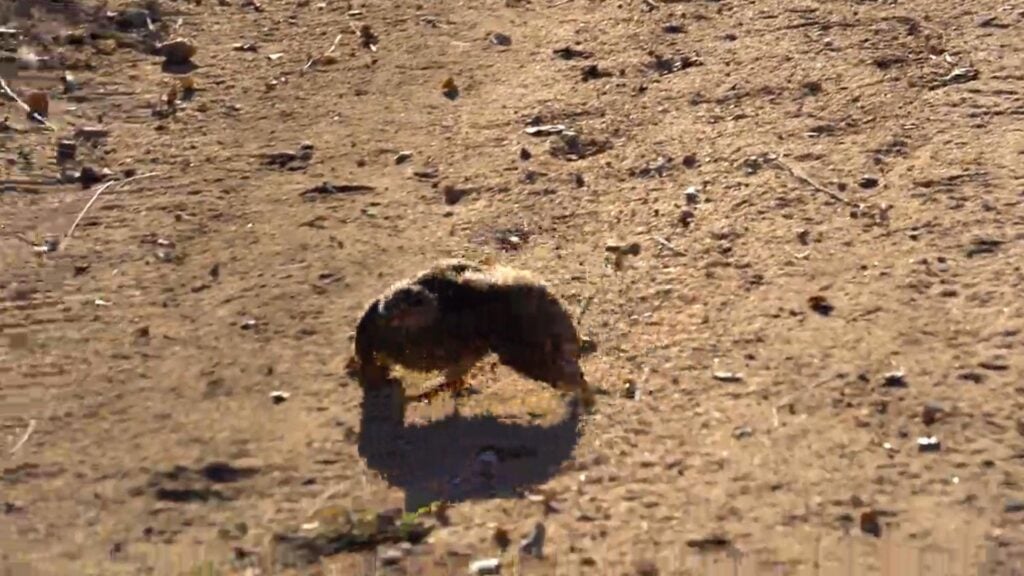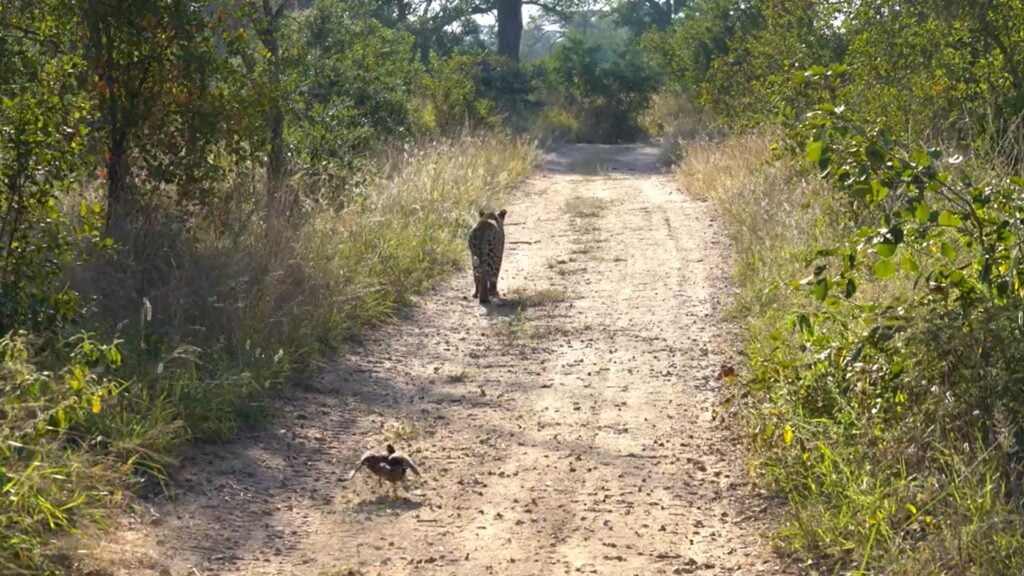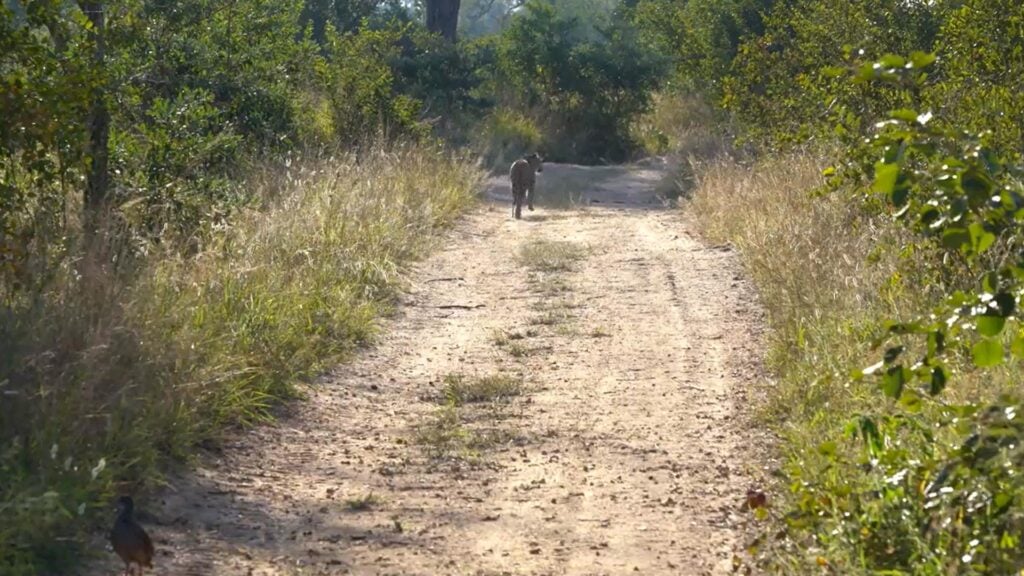The cry of the francolin interrupted the tranquil bushveld setting.

The francolin had every good reason to cry out. A leopard was moving through the vicinity and leopards have been known to eat medium-sized birds, of which the francolin is one of them.
Leopards are often called the ‘silent assassins’ of the big cat family. Unlike lions, which rely on strength and teamwork, leopards hunt alone, relying on stealth and surprise.
Get our Best Sightings as they Come in

Francolin spreads wings in response to threat
Francolins are ground-dwelling birds, which live in various habitats in the bushveld. This one displayed typical behaviour shown by the species when threatened.
When threatened, francolins may spread their wings to appear larger and more intimidating to potential predators, such as leopards.

Leopard stalks down sandy road
The leopard had been hidden by the thick bushveld but came out into the opening, stalking onto the sandy road where the game viewers’ car was driving. It had its gaze fixed firmly onto the distance. In spite of the francolin’s commotion, the leopard was clearly not interested in the bird.
Perhaps its stomach was already full. Or maybe it had spotted other prey in the distance.
Leopards are opportunistic hunters. They eat over 90 different species, from antelope and warthogs to birds, reptiles, monkeys, and even fish. They adapt their diet based on what’s available, making them highly successful survivors.
They are mostly nocturnal predators, using their excellent night vision and camouflage coat to stalk prey in darkness. This gives them a big advantage over diurnal hunters.

This leopard walked with a regal gait down the sandy road. It completely overlooked the distrenssed bird as it walked along.
Eventually the francolin relaxed and its wings returned to its side.

It was difficult to say where the leopard was going, but it continued to walk with a purposeful gait into the distance.

Leopard disappears into the distance
The game viewers continued to move their car forward so that they could follow the leopard as it walked along. The francolin stayed by the side of the road, its behaviour back to normal now that the threat of a hunt had been removed.
Encounters between francolins and leopards in the bushveld are definitely not rare. Francolins usually frequent savannas and grasslands. These are territories shared by the leopards.
This overlapping of natural habitats means that encounters between the species are frequent.
In spite of the threat of the leopard’s presence, this fortunate francolin lived to see another day.
Interestingly, francolins are famous for their loud, raucous calls. These are often heard at dawn or dusk.
Farmers in rural Africa sometimes use their calls as a ‘natural alarm clock’ as the birds are known to call reliably at first light.
As ‘watchdogs’ of the bush, francolins also give piercing alarm calls when they spot predators, warning other animals. In addition to their call, their wing display can also serve as a visual signal to animals and other birds, alerting them to the presence of a threat.
